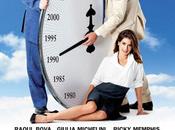
Jack Kerouac aveva una passione per i diari, per gli appunti fugaci di impressioni che altrimenti avrebbe irrimediabilmente perso (oltre alle lettere e alle liste che compilava in cui dispensava consigli). Degli oltre duecento volumi, custoditi gelosamente a Lowell, dall'ultima moglie, dei brevi estratti sono stati pubblicati dopo la morte di quest'ultima in: Un mondo battuto dal vento. I diari di Jack Kerouac 1947-1954. Ciò che segue si basa in parte su alcuni estratti dei diari pubblicati anche dal New Yorker.
Ciò che emerge dai diari è un Kerouac inedito, giovane e quotidiano, con le sue ansie, i ripensamenti e la paura del successo, nel periodo che va dal Gennaio 1948 al Febbraio 1950; proprio il periodo antecedente alla prima e folle stesura di Sulla Strada (On the Road), completato nel 1951. In quest'arco di tempo finirà il suo primo romanzo pubblicato, La Città e La Metropoli, e intraprenderà gran parte dei viaggi oggetto del successivo:
January 1, 1948. Queens, New York.
Today, read my novel [“The Town and the City”] in its entirety. I see that it’s almost finished. What is my opinion? It is the sum of myself, as far as the written word can go, and my opinion of it is like my opinion of myself!—gleeful and affectionate one day, black with disgust the next.
Da qui emerge già un aspetto della personalità dell'autore, ovvero la tendenza a cambiare idea su di sé, a scoraggiarsi ed esaltarsi in un' alternanza di momenti alti e bassi. I momenti bassi erano anche quelli in cui non riusciva a soddisfare i ritmi forsennati a cui si sottoponeva:
June 3, 1948.
I worked out an intricate mathematical thing which determines how assiduously I’m getting my novel typed and revised day after day. It’s too complicated to explain, but suffice it to say that yesterday I was batting .246, and after today’s work my “batting average” rose to .306. The point is, I’ve got to hit like a champion, I’ve got to catch up and stay with Ted Williams (currently hitting .392 in baseball). If I can catch him, June will be the final month of work on “Town & City.”
Sono momenti di amara realizzazione e transizione per lo scrittore simbolo della beat generation. Nel 1948 ha ormai ventisei anni, e sente che è forse giunto il tempo di fare sul serio. Inizia a esternare la consapevolezza, il disgusto per le convenzioni sociali di un' America consumista e conformista:
August 23, 1948.
Told my mother she ought to go live down South with the family instead of spending all her time slaving in shoe factories. In Russia they slave for the State, here they slave for Expenses. People rush off to meaningless jobs day after day, you see them coughing in the subways at dawn. They squander their souls on things like “rent,” “decent clothes,” “gas and electricity,” “insurance,” behaving like peasants who have just come out of the fields and are so dreadful tickled because they can buy baubles and doodads in stores.
My life is going to be a farm where I’ll grow my food. I won’t do nothing but sit under a tree while my crops are growing, drink homemade wine, write novels to edify my soul, play with my kids, and thumb my nose at the coughing wretches. The next thing you know, they’ll all be marching off to some annihilating war which their leaders will start to keep up appearances. Shit on the Russians, shit on the Americans, shit on them all.

Ed è in questo contesto che nasce Sulla Strada:
I have another novel in mind—“On the Road”—which I keep thinking about: two guys hitchhiking to California in search of something they don’t really find, and losing themselves on the road, coming all the way back hopeful of something else.
E mentre La città e la Metropoli fatica a trovare un proprio editore, Kerouac è comunque convinto della validità del proprio lavoro, e non si perde d'animo, nonostante le lettere di rifiuto. Nel frattempo inizia l'epoca delle traversate in macchina, con Neal Cassidy al volante, assieme a Louanne Henderson:
January 3, 1949. San Francisco.
Neal [Cassady] and I and Louanne [Henderson] talking of the value of life as we speed along: “Whither goest thou America in thy shiny car at night?” Seldom had I been so glad.
Dell'inaspettata visione data dalla combinazione tra hashish e viaggio in una notte stellata d'America:
Saw how much genius I had, too. Saw how sullen, blank Louanne hated me. Saw how unimportant I was to them; and the stupidity of my designs on her, and my betrayal of all male friends.
E di come On the Road sia cambiato grazie all'incontro con un vecchio sconosciuto in un saloon del Montana:
February 7, 1949.
I could not take my eyes off him. My whole concept of “On the Road” changed as I watched.
Gli uomini del Mid-West saranno quelli che più colpiranno la sua immaginazione, contrapposti agli uomini dell'arido Est. Nel bel mezzo di una bufera di neve, Kerouac osserva ragazzi e uomini di Dickinson North Dakota, mentre spalano per una notte intera i cumuli di neve che ostruiscono la strada:
February 9, 1949.
Is this the “isolationist” Middle West? Where in the effete-thinking East would men work for others, for nothing, at midnight in howling, freezing gales?
The trip across sunny, flat Minnesota was uneventful. How dull it was to be in the East again: no more raw hopes; all was satisfied here.

Stephen Shore
E in questo periodo verrà un tentativo di tornare ad una vita più normale e regolare, con il progettato trasferimento in Colorado, a Denver. Ma Sulla Strada ancora lo ossessiona:
April 23, 1949.
It’s about time for me to start working on “On the Road” in earnest. For the first time in ages, I want to start a new life.
Le cose sembrano quasi subito non funzionare, con Kerouac che ricorderà il 4 Luglio 1949 come uno dei giorni più tristi della propria vita; in Agosto invece scriverà una testimonianza a proposito di un certo Giroux, editore di una certa fama. I dubbi sulla popolarità che avrebbe potuto raggiungere e le sue implicazioni costituiscono un nuovo motivo di preoccupazione, dato che il manoscritto de La città e la Metropoli era stato appena accettato. La disillusione non tardò ad arrivare:
August, 1949.
I walk in darkness, and no one will help me but my own mad self. I want to communicate with Dostoyevski in heaven, and ask old Melville if he’s still discouraged, and Wolfe why he let himself die at thirty-eight. I don’t want to give up. I promise I shall never give up, and that I’ll die yelling and laughing.
With Giroux, at Central City, I had seen that my being a published writer was going to be merely a sad affair—not that he intended to show me that. I saw how sad he was, and therefore how the best and highest that the “world” has to offer was in fact empty, spiritless; because after all he is a great New Yorker, a man of affairs, a success at thirty-five, a famous young editor. I told him there were “no laurel wreaths,” i.e., the poet did not find ecstasies in worldly fame, nor in fortune, nor even in anything like acclaim or regard. He quite sensibly told me that the laurel wreath is worn only in the moment of writing.But that night my dream of glory turned gray, because I saw that the best the “white world” has to offer was not enough ecstasy for me, not enough life, joy, kicks, music; not enough night.I was so sad—in the violet dark, strolling—wishing I could exchange worlds with the happy, true-minded, ecstatic Negroes of America. All this reminded me of Neal and Louanne, who had been children here and nearby. How I yearned to be transformed into an Eddy, a Neal, a jazz musician, a nigger, a construction worker, a softball pitcher, anything in these wild, dark, humming streets of Denver night—anything but myself so pale and unhappy, so dim.Some people are made to wish they were other than what they are, only so they may wish and wish and wish. This is my star. What had I done with my life, shutting off the doors to real, boyish, human joy like this, what had made me strive to be “different” from all this?Now it was too late.
E di seguito i dubbi sul successo del romanzo appena pubblicato (Febbraio 1950), e l'emergere della volontà ferrea di portare a termine il lavoro che occupa la sua mente da due anni. In questo i diari di Jack Kerouac offrono uno spaccato delle paure e delle ansie dello scrittore da giovane, alla Stephen Dedalus, per azzardare un paragone. Il timore di non essere abbastanza si esaurisce in un pensiero finale ottimista e promettente, perché non provarci?
Tuesday, February 28, 1950.
My new plans for March: soon as I get my money, I’ll join the morning club at the Y and work out almost every weekday. Also, black coffee (no cream and sugar); chinning from the door (which has no real grip, so I can only do ten or eleven or twelve); and less sleep. I’ve been getting fat and lazy. Time for action, time for a new life, my real life. I’ll be twenty-eight in two weeks. Two meals a day instead of three. Much travelling. No stagnation. No more sorrows! No more metaphysical awe! Action . . . speed . . . grace . . . Go! Writing from true thoughts instead of stale rehashes. I’m going to express more and record less in “On the Road.”
—You have to believe in life before you can accomplish anything. That is why dour, regular-houred, rational-souled State Department diplomats have done nothing for mankind.
Why live if not for excellence?






